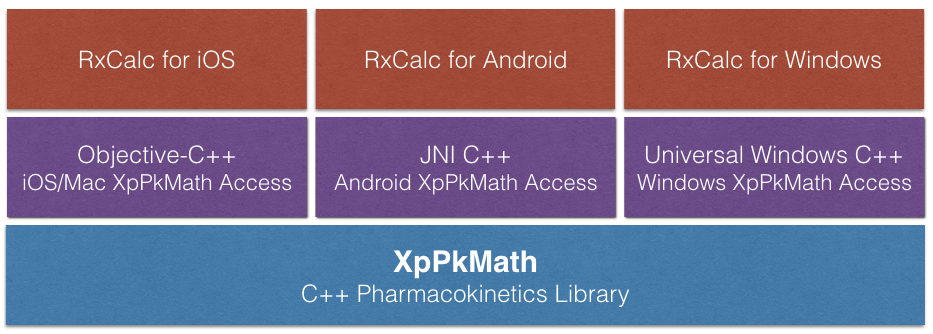 Last week Apple acquired automation workflow application Workflow. Of course there was a nice buzz around it and it was a big topic of conversation on various podcasts and websites.
Last week Apple acquired automation workflow application Workflow. Of course there was a nice buzz around it and it was a big topic of conversation on various podcasts and websites.
This, of course, got me thinking about automation. I’ve always been a fan of open API’s and the ability to automate applications. We’ve also seen recently that Omni Group is opening up OmniGraffle to automation via JavaScript.
Back in 2010 x-callback-url was created as a way to allow applications to call into each other and return results so you could chain together calls to build custom workflows. Apps like Launch Center Pro and Workflow took advantage of x-callback-url to let you build those workflows and execute them. Now we have a bonafide standard, without a standard. The app ecosystem found a way to support automation without Apple’s help.
I’ve used Launch Center Pro but until recently I’d never used Workflow, and it’s pretty amazing. The Workflow guys did an amazing job creating a drag and drop UI for building what amounts to a program. Well worth a look.
So, this brings me to what I’ve been thinking about over the past few days. Given x-callback-url and App URL schemes in general it would be extremely cool to use those to create object hierarchies using JavaScript. Why JavaScript? Well, it’s native to iOS and applications can use the runtime. Given the advances made by the Workflow team why not take it one step further?
Allow applications to specify a  Scripting Dictionary or Type Library as part of the application bundle, this should allow runtime creation of objects. I know this isn’t rocket science and it’s been done many times over.
Short of adding support to the OS it would be pretty sweet if an App like Workflow, Launch Center Pro, or Pythonista would standardize on a way to parse a URL Scheme into an Object Hierarchy.
I’m going to use Evernote, Bear, Overcast, and Arrgly as examples.
What do you mean by Object Hierarchy?
That’s a good question. Here’s what I’m thinking. Since the Apps mentioned above all support URL Schemes we can derive an Object Hierarchy from them. Basically the beginning of a URI begins with a scheme. The scheme is the name. In the case of Evernote it’s evernote. Pretty simple, right?
Given the scheme name we follow that with a path. In the case of x-callback-url based URL schemes we will skip over that part and move to the second item in the path. This will be the action, or function, or the object we’re going to execute.
evernote://x-callback-url/new-note?type=text&title=EC%203
The above URL will tell Evernote to create a new note of type text with a title of “EC 3”. If we had a way to parse that in a runtime application we could present the user with an Object that has methods that take arguments, like this.
evernote.new-note(type, title)
Let’s do a couple for Bear. First the URL Scheme.
bear://x-callback-url/create?title=My%20Note%20Title&text=First%20line&tags=home,groceries
Now translated into code
bear.create(title, text, tags)
Overcast URL Scheme.
overcast://x-callback-url/add?url=
Code
overcast.add(url)
And finally, my favorite, Arrgly URL Scheme.
arrgly://shorten?url=
Arrgly Code
arrgly.shorten(url)
Pretty simple to turn all of those into objects. When I say you can create a hierarchy it means you could, by convention, lump groups of actions into objects, or like the above examples have a set of actions that all live on a single object.
Here’s what a object might look like as a URL Scheme.
thing://x-callback-url/document/add?title=
thing://x-callback-url/document/delete?id=
That would result in using it like this
thing.document.add(title)
thing.document.delete(id)
Of course this need more fleshing out and it would require app developers to decide on a well known convention to make it work as expected, but it could be done with a bit time and effort. It could be these become an extension of the x-callback-url specification?
 When I need to load a view controller from a Storyboard I like to create an extension to the view controller’s class and add a class function to it that does the work. It keeps things looking clean in the code where you use it.
When I need to load a view controller from a Storyboard I like to create an extension to the view controller’s class and add a class function to it that does the work. It keeps things looking clean in the code where you use it. I got an email from Apple a week or so back letting me know I needed to upgrade one of my apps to 64-bit. I knew right away it was
I got an email from Apple a week or so back letting me know I needed to upgrade one of my apps to 64-bit. I knew right away it was 
 Over my holiday break I didn’t code as much as I wanted to, but I did manage to get some done. Since returning to my day job I’ve felt a bit more excited about working on the RxCalc update at night. I don’t know why, I just have.
Over my holiday break I didn’t code as much as I wanted to, but I did manage to get some done. Since returning to my day job I’ve felt a bit more excited about working on the RxCalc update at night. I don’t know why, I just have. Every once in a while developers drop interesting nuggets of information on Twitter or their weblogs on the state of Apple App Stores and how they relate to their businesses.
Every once in a while developers drop interesting nuggets of information on Twitter or their weblogs on the state of Apple App Stores and how they relate to their businesses. 
 The new C++ PKMath library is written. I’ve built a small layer of Objective-C++ over the top of it so I can write the new UI in Swift. The old RxCalc was 100% Objective-C, the new one will be a mix of C++, Objective-C++, and Swift. That sounds kind of weird, but there is a means to an end.
The new C++ PKMath library is written. I’ve built a small layer of Objective-C++ over the top of it so I can write the new UI in Swift. The old RxCalc was 100% Objective-C, the new one will be a mix of C++, Objective-C++, and Swift. That sounds kind of weird, but there is a means to an end.  I stumbled upon an interesting conversation between some well know Apple Ecosystem Developers this morning discussing, maybe lamenting, the lack of UIKit on macOS. I’m afraid I may have pushed these fellas to take their conversation private, I am sorry if that was the case.
I stumbled upon an interesting conversation between some well know Apple Ecosystem Developers this morning discussing, maybe lamenting, the lack of UIKit on macOS. I’m afraid I may have pushed these fellas to take their conversation private, I am sorry if that was the case.